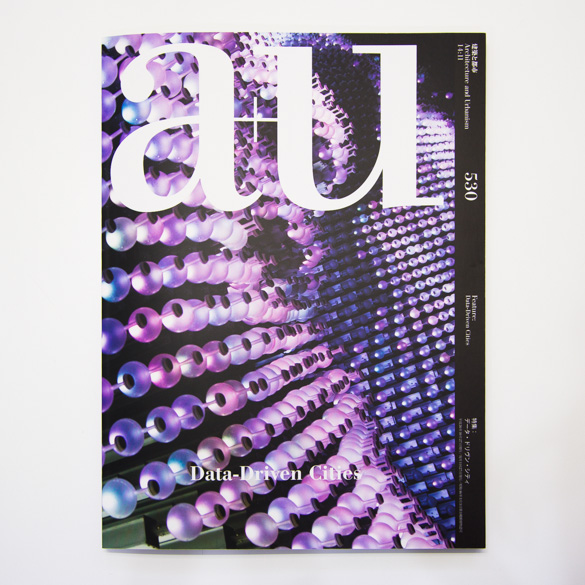 I edited the November 2014 issue of a+u (Architecture & Urbanism) magazine. The issue’s theme – Data-Driven Cities – is broad, designed to encompass a range of technological drivers reforming urbanity. It’s also a provocative title which elicited many contributors to implore that human agency, not big data, should sit firmly in the driver’s seat when harnessing computation to analyze, develop and improve cities.
I edited the November 2014 issue of a+u (Architecture & Urbanism) magazine. The issue’s theme – Data-Driven Cities – is broad, designed to encompass a range of technological drivers reforming urbanity. It’s also a provocative title which elicited many contributors to implore that human agency, not big data, should sit firmly in the driver’s seat when harnessing computation to analyze, develop and improve cities.

It was a privilege to commission and edit the writing of so many distinguished commentators and practitioners in this field. The culmination of over six months’ work, this rather textual edition (14 essays and interviews) is a departure for the publication, which tends toward photographs of notable architectural works. Nowadays, not only is the photographic medium migrating online, there are precious few remaining outlets for significant theoretical writing. However, a+u’s global reputation as a venerable print journal empowered me to gather a diverse range of influential voices, engendering interesting comparisons and serendipitous counterpoints throughout.

Some of this issue’s essays feel canonical. MIT’s Carlo Ratti and Matthew Claudel forecast the coming era of the media facade, where buildings, lighting, and displays converge into a seamless reality. Wikihouse founder Alastair Parvin rejects Silicon Valley’s exploitative data grab and rallies eloquently for open source architecture in its most literal form. Geeta Mehta’s essay portrays data as a pool of untapped human resourcefulness; she explains how residents of Dharavi, Asia’s largest slum, are ceaselessly improving an unplanned city of their own design. Dan Hill’s overarching essay asserts that the urban parasitism of many disruptive startups – Uber, Lyft and Bridj, etc – sidesteps the broader civic responsibilities traditionally championed by architects and planners.

It was also a privilege to meet so many influential contributors. I traveled to San Francisco to conduct an exclusive interview with Flux, the Google spinoff that’s leveraging public municipal data to automate the initial phases of design and urban planning. Speaking to Autodesk’s Phil Bernstein in Boston reinforced a concerning outlook for architects, if they fail to wake up to the reality that disruptive software developments are threatening their established business model.

Thank you to everyone who very generously contributed to this magazine!

The bilingual digital edition of A+U 530: Data-Driven Cities is available for iPad, iPhone, Android, Mac & PC at -50% off the cover price.
